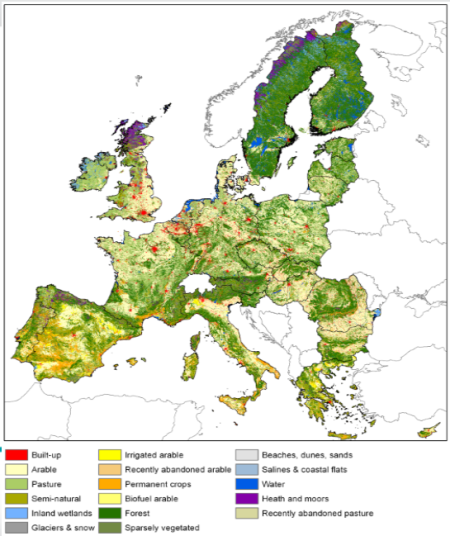
Area characterisation:
The European Union
Objective:
Evaluating how recent and forthcoming EU policy developments affect the levels of ecosystem services (ES) and natural capital (NC) in Europe. Many of Europe's natural habitats and species are in decline. While the EU has a number of policies in place to safeguard habitats and species, losses are ongoing for many habitats, species and associated ecosystem services.
Potential impacts/benefits:
- Research, particularly on ecosystem services mapping and on No Net Loss/offset policy assessments is informing policy at the EU scale (for example, as input to the EU No Net Loss Initiative).
- Demonstrate the potential effectiveness of policy measures to avoid, minimize and offset impacts on (semi)natural habitats across Europe and underlying factors of success or failure, related to land-policy interactions.
- Test priority areas identification methods for ecosystem services, considering ecosystem services demand and flow to inform decision making.
Transferability of result:
Land use modelling can be applied at regional to global scales (see CLUEScanner, CLUMONDO ), with context specific input data.
The ecosystem services indicators can be applied at regional to EU scales, with context-specific input data (see respective publications).
Prioritization methods can be applied at regional to global scales (see Zonation ), but need context specific data about biodiversity and/or ecosystem services and costs of conservation actions.
Lessons learnt:
Business-as-Usual scenarios of land use change in Europe have widespread negative effects on ES/NC supply (Tucker et al. 2014; Schulp et al. 2016).~Policy measures to avoid, minimize and offset impacts on (semi)natural habitats are projected to be effective in reducing impacts across the EU, although fully meeting no net loss is very challenging. The effectiveness of policy measures changes across the EU, and multiple mechanisms are responsible for this. See Schulp et al (2016).~When applied appropriately, biodiversity offsets are one solution to widespread, poorly-compensated biodiversity loss (Quetier et al. 2015).~Accounting for the demand of ecosystem services is essential in the identification of priority areas for ecosystem services (Verhagen et al. 2017)~
Publications and reports:
- Biodiversity offsets are one solution to unmitigated biodiversity loss
- Spatio-temporal dynamics of regulating ecosystem services in Europe - The role of past and future land use change
- Wild food in Europe: A synthesis of knowledge and data of terrestrial wild food as an ecosystem service
- Quantifying and mapping ecosystem services: Demand and supply of pollination in the European Union
- Uncertainties in Ecosystem Service Maps: A Comparison on the European Scale
- How climate proof is the European Union's biodiversity policy?
- Ecological and economic conditions and associated institutional challenges for conservation banking in dynamic landscapes
- The use of eco-accounts in Baden-Wurttemberg to implement the German Impact Mitigation Regulation: A tool to meet EU's No-Net-Loss requirement?